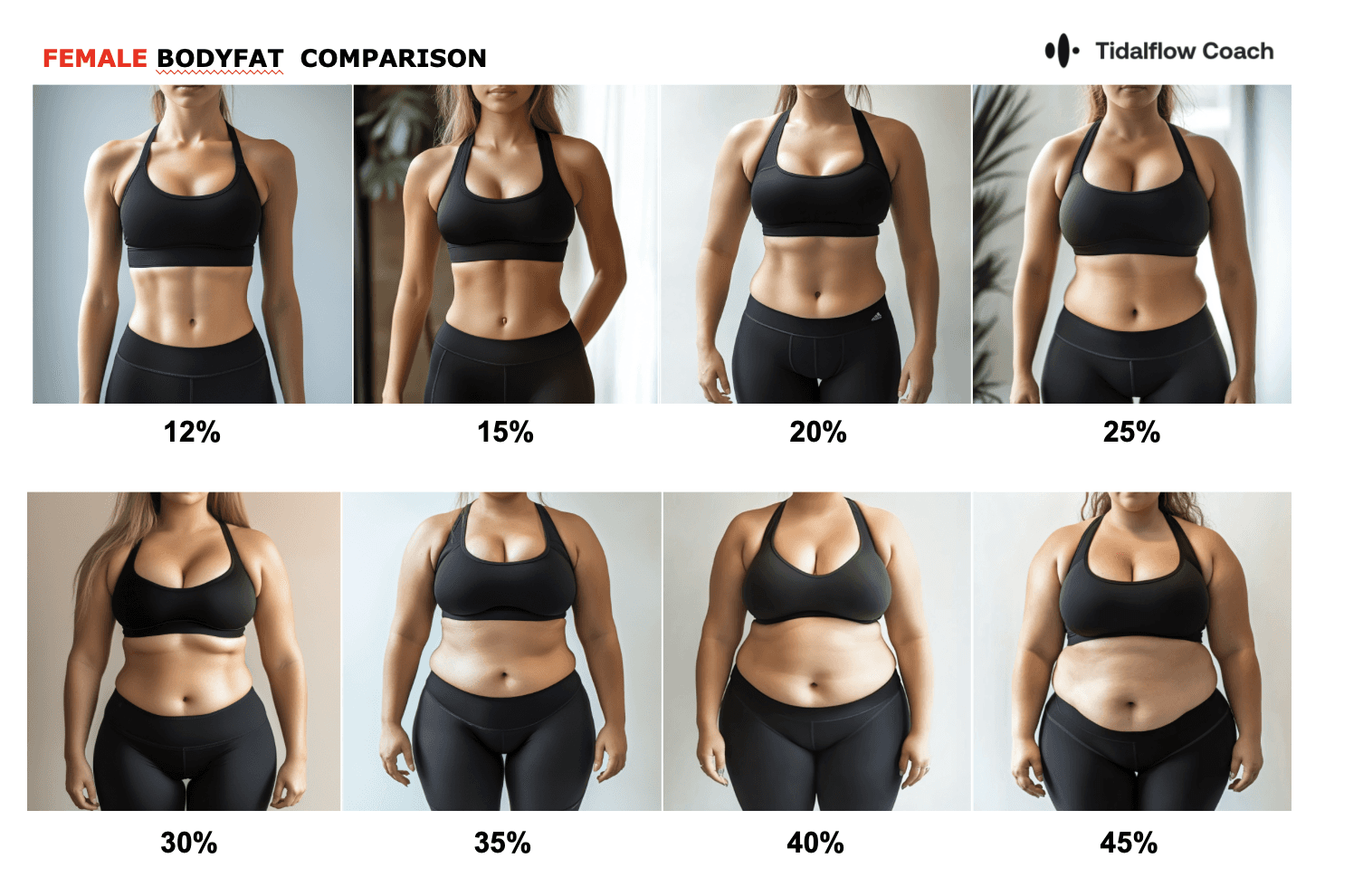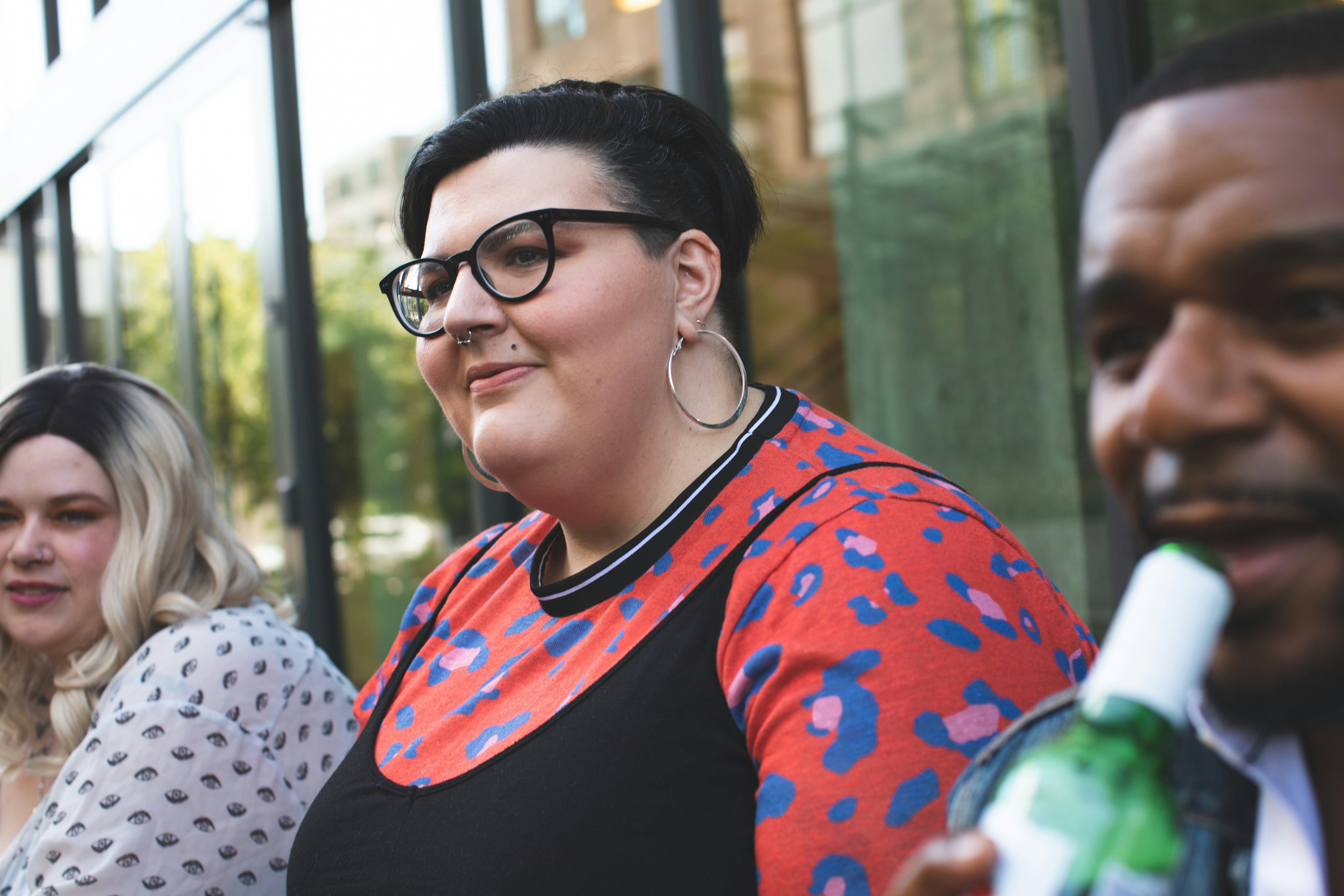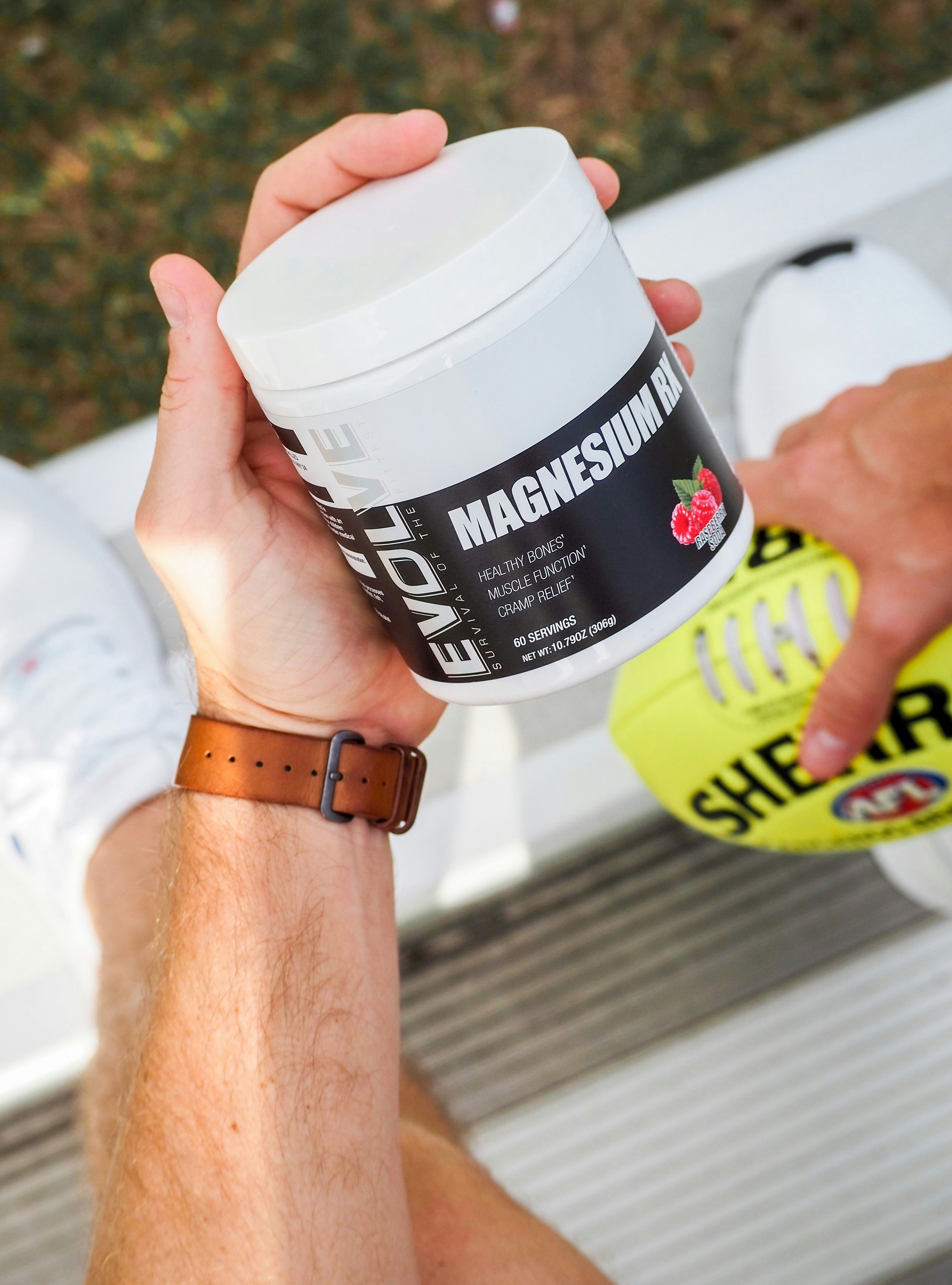Sculpt Your Shoulders: Top Dumbbell Exercises for Rear Delts
Sep 12, 2024
Sculpt Your Shoulders: Top Dumbbell Exercises for Rear Delts
When it comes to building well-rounded, powerful shoulders, the rear deltoids often get overlooked. However, these muscles play a crucial role in both aesthetics and functionality. In this comprehensive guide, we'll explore the best dumbbell exercises for rear delts, proper techniques, and how to incorporate them into your workout routine for maximum results.
Understanding the Importance of Rear Delts
The rear deltoids, also known as posterior deltoids, are one of the three heads that make up the shoulder muscles. While the front and middle delts often get more attention in typical shoulder workouts, neglecting the rear delts can lead to muscle imbalances and postural issues. Strong rear delts contribute to:
Improved posture and shoulder stability
Enhanced upper body aesthetics
Better performance in pulling exercises
Reduced risk of shoulder injuries
By incorporating targeted dumbbell exercises for rear delts into your routine, you'll be on your way to building stronger, more balanced shoulders.
Top Dumbbell Exercises for Rear Delts
Let's dive into some of the most effective exercises to target your rear delts using dumbbells:
This classic exercise is a staple for rear delt development.
How to perform:
Stand with feet shoulder-width apart, holding a dumbbell in each hand.
Hinge at the hips, keeping your back straight, until your upper body is nearly parallel to the floor.
With a slight bend in your elbows, raise the dumbbells out to the sides until they're in line with your shoulders.
Lower the weights back down with control.
Sets and reps: 3-4 sets of 12-15 reps
Pro tip: Focus on squeezing your shoulder blades together at the top of the movement for maximum rear delt activation.
This variation allows for better isolation of the rear delts.
How to perform:
Sit on the edge of a bench with your feet flat on the floor.
Lean forward, resting your chest on your thighs.
Hold a dumbbell in each hand, letting them hang towards the floor.
Raise the dumbbells out to the sides until they're in line with your shoulders.
Lower them back down with control.
Sets and reps: 3 sets of 10-12 reps
Variation: You can also perform this exercise standing, leaning on an incline bench for support.
This exercise targets the upper portion of the rear delts effectively.
How to perform:
Set an incline bench to a 45-degree angle.
Lie face down on the bench with a dumbbell in each hand.
Extend your arms towards the floor, forming a "Y" shape with your body.
Raise the dumbbells up and slightly out until they're in line with your head.
Lower them back down with control.
Sets and reps: 3 sets of 10-12 reps
Key focus: Keep your core engaged throughout the movement to maintain proper form.
Dumbbell Reverse Fly on Incline Bench
This variation provides a different angle to target the rear delts.
How to perform:
Set an incline bench to a 30-degree angle.
Lie face down on the bench with a dumbbell in each hand.
Let your arms hang straight down towards the floor.
Keeping a slight bend in your elbows, raise the dumbbells out to the sides until they're in line with your shoulders.
Lower them back down with control.
Sets and reps: 3-4 sets of 12-15 reps
Tip: Experiment with different bench angles to find what works best for you.
While primarily a back exercise, the single-arm row also engages the rear delts significantly.
How to perform:
Place one knee and hand on a bench, with the other foot on the ground.
Hold a dumbbell in your free hand, letting it hang straight down.
Pull the dumbbell up towards your hip, focusing on squeezing your rear delt at the top.
Lower it back down with control.
Sets and reps: 3 sets of 8-12 reps per arm
Pro tip: At the top of the movement, pause briefly and focus on contracting your rear delt for maximum engagement.
Incorporating Rear Delt Exercises into Your Workout Routine
To effectively build your rear delts, it's crucial to incorporate these exercises into a well-structured workout routine. Here's a sample shoulder workout that includes targeted rear delt training:
Warm-up: 5-10 minutes of light cardio and dynamic stretching
Dumbbell Overhead Press: 3 sets of 8-10 reps
Bent-Over Dumbbell Rear Delt Fly: 3 sets of 12-15 reps
Dumbbell Lateral Raises: 3 sets of 12-15 reps
Incline Dumbbell Y-Raise: 3 sets of 10-12 reps
Dumbbell Front Raises: 3 sets of 12-15 reps
Seated Dumbbell Rear Delt Raise: 3 sets of 10-12 reps
Cool-down: 5-10 minutes of static stretching
Remember to adjust the weights and reps based on your fitness level and goals. It's also important to maintain proper form throughout each exercise to maximize results and prevent injury.
Common Mistakes to Avoid When Training Rear Delts
To get the most out of your rear delt workouts, avoid these common pitfalls:
Using too much weight: This can lead to poor form and reduced muscle activation.
Neglecting full range of motion: Ensure you're fully contracting and extending your rear delts in each exercise.
Relying on momentum: Focus on controlled movements rather than swinging the weights.
Overtraining: Give your rear delts adequate rest between workouts to prevent burnout.
Ignoring proper posture: Maintain a neutral spine and avoid rounding your back during exercises.
By focusing on proper technique and mind-muscle connection, you'll see better results and reduce the risk of injury.
The Role of Nutrition in Shoulder Development
While targeted exercises are crucial for rear delt development, proper nutrition plays a vital role in muscle growth and recovery. Ensure you're consuming enough protein to support muscle repair and growth, aiming for 1.6-2.2 grams of protein per kilogram of body weight daily. Additionally, maintain a balanced diet with adequate carbohydrates for energy and healthy fats for hormone production.
Alt text: Plate containing grilled chicken breast, quinoa, and steamed vegetables, representing a balanced meal for muscle growth
Key nutritional considerations for shoulder development include:
Protein sources: Lean meats, fish, eggs, dairy, and plant-based proteins
Complex carbohydrates: Brown rice, sweet potatoes, and whole grains
Healthy fats: Avocados, nuts, seeds, and olive oil
Micronutrients: Vitamins and minerals from a variety of fruits and vegetables
Hydration: Adequate water intake to support muscle function and recovery
Progressive Overload for Continuous Rear Delt Growth
To ensure ongoing progress in your rear delt development, implement the principle of progressive overload. This involves gradually increasing the demands placed on your muscles over time. Here are some ways to apply progressive overload to your rear delt exercises:
Increase the weight: Gradually add weight to your exercises as you get stronger.
Increase the volume: Add extra sets or reps to your existing routine.
Decrease rest time: Shorten the rest periods between sets to increase workout intensity.
Improve form: Focus on perfecting your technique to engage the rear delts more effectively.
Increase time under tension: Slow down the eccentric (lowering) phase of each rep.
By consistently challenging your rear delts, you'll promote continuous growth and prevent plateaus in your training.
Integrating Rear Delt Training with Tidalflow's AI Personal Trainer
To optimize your rear delt training, consider using Tidalflow's AI-powered personal trainer. Our innovative system can create personalized workout plans tailored to your specific goals, fitness level, and available equipment. Whether you're a beginner or an advanced lifter, Tidalflow can help you maximize your rear delt development.
Benefits of using Tidalflow for your rear delt training include:
Customized exercise selection based on your progress and goals
Real-time form feedback to ensure proper technique
Progressive overload recommendations to continually challenge your muscles
Integration with nutrition tracking to support muscle growth
Adaptive workout schedules that fit your lifestyle
By combining the dumbbell exercises for rear delts outlined in this guide with Tidalflow's personalized approach, you'll be well on your way to building strong, well-defined shoulders.
Supplementary Exercises for Comprehensive Shoulder Development
While focusing on rear delt exercises is crucial, it's important to maintain balance in your shoulder training. Here are some complementary exercises to consider:
Face Pulls: Targets the rear delts and upper back, improving posture.
Upright Rows: Engages all three heads of the deltoids.
Shrugs: Targets the upper traps, which work in conjunction with the rear delts.
External Rotations: Strengthens the rotator cuff muscles, supporting overall shoulder health.
Push Press: A compound movement that engages the entire shoulder complex.
Incorporating these exercises into your routine will ensure comprehensive shoulder development and help prevent muscle imbalances.
Recovery and Mobility for Healthy Shoulders
Proper recovery and mobility work are essential for maintaining healthy, functional shoulders. Here are some strategies to incorporate into your routine:
Foam rolling: Use a foam roller to release tension in your upper back and shoulders.
Stretching: Perform shoulder and chest stretches regularly to maintain flexibility.
Band pull-aparts: A great warm-up exercise that activates the rear delts and improves posture.
Shoulder dislocations: Use a resistance band or stick to improve shoulder mobility.
Sleep positioning: Avoid sleeping on your side with your arm under your pillow to prevent shoulder strain.
By prioritizing recovery and mobility, you'll reduce the risk of injury and improve your overall training performance.
Tracking Your Rear Delt Progress
To stay motivated and ensure you're making progress, it's important to track your rear delt development over time. Here are some methods to monitor your progress:
Take progress photos: Regular photos of your back and shoulders can help you visualize changes.
Keep a workout log: Record your exercises, weights, and reps to track strength improvements.
Measure your shoulders: Use a flexible tape measure to track changes in your shoulder circumference.
Assess your posture: Notice improvements in your overall posture as your rear delts strengthen.
Use Tidalflow's progress tracking features: Our AI system can help you visualize your progress over time.
Regular assessment of your progress will help you stay on track and make necessary adjustments to your training program.
Conclusion: Building Strong, Balanced Shoulders Starts Now
Developing well-defined rear delts is a journey that requires dedication, proper technique, and consistency. By incorporating the dumbbell exercises for rear delts we've discussed and following a structured workout plan, you'll be well on your way to achieving balanced, powerful shoulders.
Remember, everyone's fitness journey is unique. What works for one person may not work for another, which is why personalized guidance can be so valuable. With Tidalflow's AI personal trainer, you can get a tailored approach to rear delt training that adapts to your progress and helps you avoid plateaus.
Are you ready to take your shoulder training to the next level? Start your journey with Tidalflow today and unlock your full potential for stronger, more sculpted shoulders.
Get Your Personalized Rear Delt Workout Plan with Tidalflow - Start Now
By following this comprehensive guide and leveraging the power of Tidalflow's AI-driven personal training, you're not just working out – you're transforming your physique and overall strength. Your path to impressive, well-rounded shoulders begins now!
You should not have to do it all on your own













